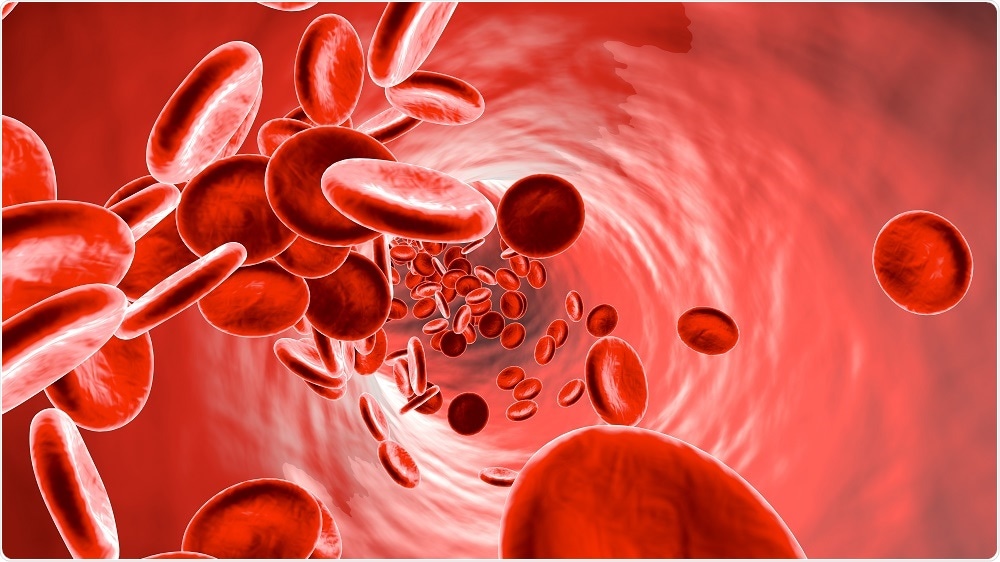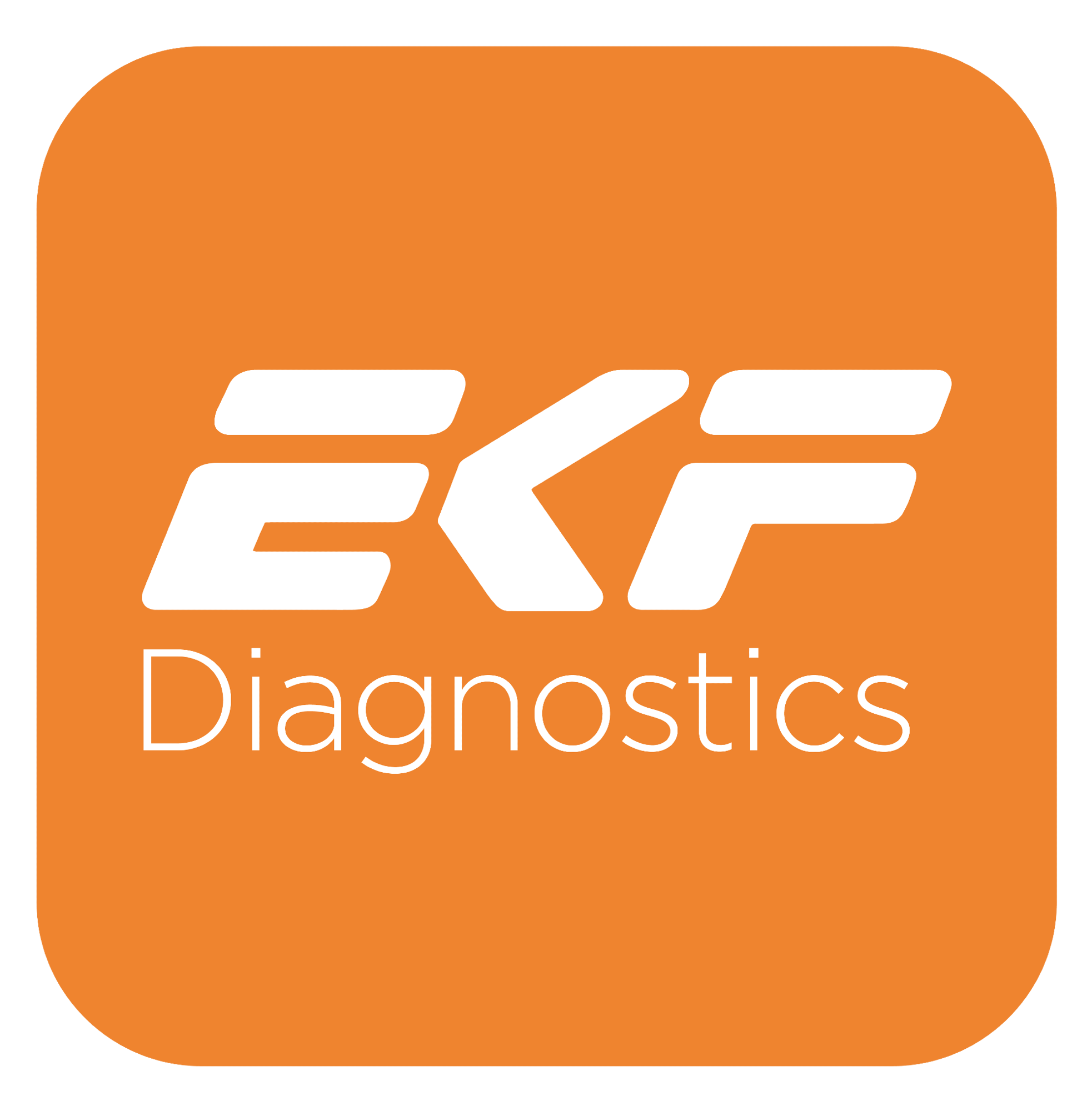Anaemia is a disorder that occurs when the of red blood cell count is lower than normal and when haemoglobin levels are insufficient. Approximately 1.6 billion people or 25% of the global population are affected by anaemia.1

Image credit: Spectral-Design /shutterstock.com
The most commonly seen aetiology is iron-deficiency anaemia, but anaemia can be caused by a variety of different origins including: a patient’s geographic status and/or health2. For example, malnutrition, infections, and diseases are major causes for anaemia in developing nations.
Anaemia is caused by poor production of red blood cells, blood loss, or elevated rates of red blood cell destruction. Women of childbearing age are the largest risk group, as they may suffer from blood loss during menstruations or increased haemoglobin demands during pregnancy.
Haemoglobin is a protein molecule found in red blood cells. It contains iron and carries oxygen from the lungs to the body and returns carbon dioxide back to the lungs for exhalation.
Guided therapy based on haemoglobin concentration measurement and monitoring provides an effective means to manage anaemia symptoms. This can form the basis of an individualised and customised treatment for anaemic patients.
The most at-risk patients for developing anaemia
Age, gender, health status, and geography are all risk factors that contribute to anaemia. Perhaps, the largest risks for iron-deficiency anaemia are age and gender, with a higher prevalence of anaemia in women and children.

Image credit: Nina Buday /shutterstock.com
Common risk factors for anaemia are heavy menstruation, blood loss during surgery, or multiple pregnancies with higher haemoglobin needs. Lack of iron-rich food choices increases the risk of anaemia in young children.
Young children
According to the World Health Organization (WHO), toddlers and children at pre-school age have the highest prevalence of anaemia, constituting 47.4% of their population group. This prevalence is largely because of poor nutritional choices.1
A sufficient haemoglobin concentration is essential for growth and development in children, but despite receiving a good supply of dairy it may be lacking in iron, so children in this age group can lack adequate iron supply which eventually increases their chances of developing iron-deficiency anaemia.5
Commercial cereals, and other iron-fortified foods, are often recommended to be given to children aged 6 months and above to reduce their risk of anaemia. Infants aged under 12 months should not be given cow’s milk as their only milk choice because of its low iron content.
Pregnant women and women of childbearing years
Women experience blood loss during menstruation, and pregnancy places a greater demand on the blood supply to sustain the developing foetus. These factors expose women to greater risk of anaemia, with a global prevalence of about 42%.1
Women of childbearing age are the population with most individuals affected by anaemia: around 468 million non-pregnant women have the blood disorder according to WHO3. This group is the highest at-risk population for iron-deficiency anaemia.
Illness and surgery-related bleeding complications
A patient can also become anaemic due to long-term illness. Risk factors that contribute are diseases such as HIV/AIDS, cancer, kidney disease, diabetes, cardiovascular disease, and inflammatory bowel disease (IBD). Also, infectious or inherited disorders like malaria, schistosomiasis and haemoglobinopathies can be the underlying cause of anaemia. 6,7,8,9.
Another common factor associated with anaemia is bleeding of gastrointestinal tract, and bleeding caused by injury or surgery. In such cases, haemoglobin analysers should be used to monitor the haemoglobin levels so that appropriate treatments can be given. Anaemic patients may also benefit from supplementary iron and should talk to their healthcare professionals about this.
Malnourished patients from developing nations
People living in developing countries face a greater risk of anaemia due to incidences of disease, infections, malnourishment, and frequent pregnancies.4 In order to combat the prevalence of anaemia in these countries, extensive initiatives that include pregnancy and nutrition support have been proposed.
Treatment
The main goal for treating anaemia is to increase the oxygen carrying capacity of the blood by increasing the amount of haemoglobin. The most effective approach is to address the underlying causes of anaemia, based on individual patient’s health status.
Treatments may include as follows:
- Treating any acute, chronic or infectious disorders that may lead to anaemia
- Adjusting the quality of nutrients by boosting the intake of iron-rich foods
- Using vitamin supplements to improve iron absorption
Iron supplementation is the most common treatment to fight anaemia. Vitamin C also helps patients to absorb iron, and therefore could be used in the treatment procedure. Folic acid is recommended for pregnant women and so is vitamin B12, which is an important nutrient used by many doctors as part of anaemia treatment.
To ensure an effective treatment program, healthcare professionals may want to use a haemoglobin analyser to find out the exact haematological requirements of their patients.
Haemoglobin testing for patient management
Today, anaemia, especially iron-deficiency anaemia, is still a major health burden around the world. Although initiatives are being undertaken to prevent this disorder, the reverse effects of growing populations with an increase in years lived with disability, sustain the need to combat anaemia.10
Accurate and precise haemoglobin testing is essential for identifying patients-at-risk and helps to design a treatment method that is individualised based on the health status of the patient. For at-risk individuals, haemoglobin testing can serve as an efficient and useful tool because it not only reveals the patient’s current anaemic status, but also allows monitoring of the treatment success. .
In clinical settings, tools such as haemoglobin analysers from EKF Diagnostics are often employed to give quantitative haemoglobin readings within a short period of testing, providing instant and better understanding of a patient’s health status and offering guidance during the course of the treatment.
References
- Global anaemia prevalence and number of individuals affected. World Health Organization Web site. https://www.who.int/. Accessed April 3, 2017.
- Kassebaum NJ, Jasrasaria R, Naghavi M, et al. A systematic analysis of global anaemia burden from 1990 to 2010. Blood. 2014;123(5):615-624.
- de Benoist B et al., eds. Worldwide prevalence of anaemia 1993-2005. WHO Global Database on Anaemia Geneva, World Health Organization, 2008]. Approximately 20% of maternal mortality is attributed to anaemia, according to the World Health Organization https://www.who.int/nutrition/topics/ida/en/.
- Thakur N, Chandra J, Pemde H, Singh V. Anaemia in severe acute malnutrition. Nutrition. 2014;30(4):440-442.
- Parkin PC, DeGroot J, Maguire JL, Birken CS, Zlotkin S. Severe iron-deficiency anaemia and feeding practices in young children. Public Health Nutr. 2016;19(4):716-722.
- Lipshultz HM, Hileman CQ, Ahuja S, Funderburg NT, McComsey GA. Anaemia is associated with monocyte activation in HIV-infected adults on antiretroviral therapy. Antivir Ther. 2015;20(5):521-527.
- Mehdi U, Toto RD. Anaemia, Diabetes, and Chronic Kidney Disease. Diabetes Care. 2009; 32(7):1320–1326.
- Kaitha S, Bashir M, Ali T. Iron deficiency anaemia in inflammatory bowel disease. World J Gastrointest Pathophysiol. 2015;6(3):62-72.
- Kassebaum NJ, Jasrasaria R, Naghavi M, et al. A systematic analysis of global anaemia burden from 1990 to 2010. Blood. 2014;123(5):615-624.
- Rabindran, Gedam DS. Anemia: Increasing prevalence in general population: why ?. Int J Med Res Rev 2015;3(7):673-674. doi: 10.17511/ijmrr.2015.i7.144.
- https://www.ekfdiagnostics.com/anemia-and-hemoglobin-testing.html
About EKF Diagnostics
EKF Diagnostics is a global medical diagnostics business with a long history in point-of-care testing and central laboratory manufacturing. Our products have a hard earned reputation for ease of use, reliability and accuracy.
Our core focus is the Point of Care market with over 80,000 haemoglobin, A1c, glucose and lactate analyzers in regular use in more than 100 countries running more than 50m tests every year.
Our range of HbA1c analyzers and glucose analyzers are used in GP surgeries, sports clinics, and diabetes clinics. They deliver fast and reliable results that provide both practitioner and patient with the information they need to make clinical or lifestyle decisions in minutes.
EKF Diagnostics offer the largest range of hemoglobin and hematocrit analyzers on the market, giving physicians and specialists a choice of product with different methodology, measurement speed, connectivity and price options. Our aim is to make blood donation and anaemia screening easier, more affordable and more accessible than ever before.
The EKF Maternal & Women’s Health Point of Care range aims to improve healthcare outcomes for women and children by providing physicians with a suite of products covering pregnancy testing, anaemia screening, fetal scalp lactate testing and post birth creamatocrit measurement.
EKF Diagnostics is also a global manufacturer of central laboratory products including Stanbio Chemistry reagents, benchtop laboratory analyzers, rapid tests and centrifuges. Our chemistry reagents can be used on the majority of analyzers found in hospital laboratories around the world.
The ordinary shares of EKF Diagnostics Holdings plc are traded on the AIM market of the London Stock Exchange.
Sponsored Content Policy: News-Medical.net publishes articles and related content that may be derived from sources where we have existing commercial relationships, provided such content adds value to the core editorial ethos of News-Medical.Net which is to educate and inform site visitors interested in medical research, science, medical devices and treatments.